The Diabetes Dessert Dilemma
By Adam Brown
 8 tips for tackling dessert: “chocolate drink,” dessert pudding, and more!
8 tips for tackling dessert: “chocolate drink,” dessert pudding, and more!
Dessert is one of those pesky diabetes dilemmas. If I eat it, I’m likely to experience the blood sugar consequences, frustration, and sluggishness for hours later. But avoiding dessert is often hard – we’re all hardwired to love sweet things and be social, and dessert usually appeals to both. Ugh!
This article shares some of my tips for navigating dessert, based on over 50,000 hours wearing CGM and my always-in-progress food experiments! I used many of these at a wedding this past weekend, where dessert landmines were everywhere. Read on for tips on eating different desserts and making dessert less appealing or more difficult.
Please send us your diabetes dessert tips too – we’ll add our favorites to the end of this article.
Finally, find more details in the food chapter of Bright Spots & Landmines (free PDF, Amazon), including how I navigate restaurants, what I buy at the store, and what I eat at every meal.
Eat Different Desserts
1. Many nights after dinner, I make a “chocolate drink” – hot water mixed with one tablespoon of unsweetened dark chocolate cocoa powder (roughly 2-3 grams of carbs).
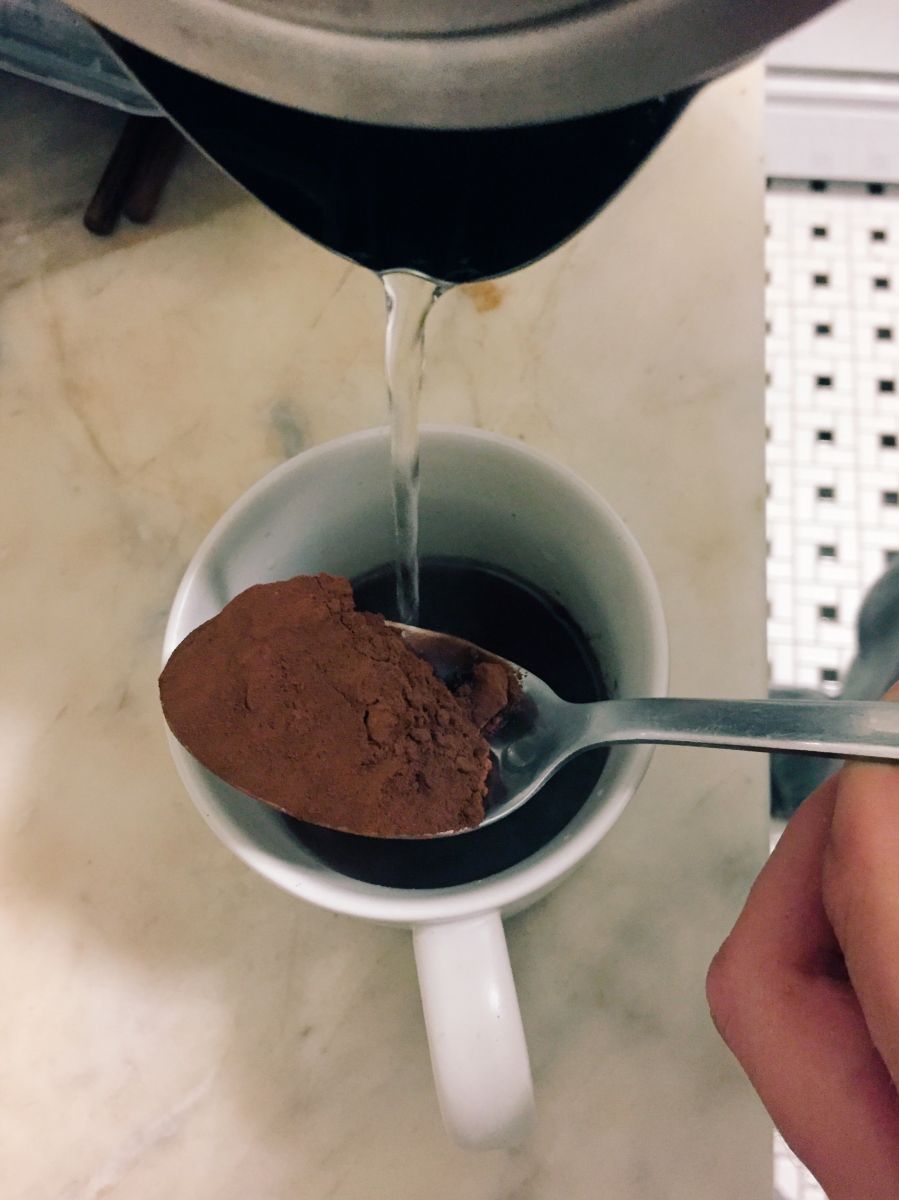 This drink tastes rich and delicious, and I find it doesn’t increase blood sugar. I’ve been buying this one from Cacao Berry recently, but also like this one from Hershey’s. Whatever you buy, make sure there are zero grams of sugar on the label. Most cocoa mixes have lots of sugar added in.
This drink tastes rich and delicious, and I find it doesn’t increase blood sugar. I’ve been buying this one from Cacao Berry recently, but also like this one from Hershey’s. Whatever you buy, make sure there are zero grams of sugar on the label. Most cocoa mixes have lots of sugar added in.
Those desiring a sweeter version could add a splash of milk or a bit of stevia. A peppermint tea bag is another great add-on, turning it into a “mint chocolate chip drink!”
Note: cocoa does have a tiny bit of caffeine and a related compound called theobromine, so be conservative with the amount and evening timing if you are highly caffeine-sensitive.
2. Strawberries, raspberries, and blueberries (fresh or frozen) are an outstanding option to replace traditional desserts.
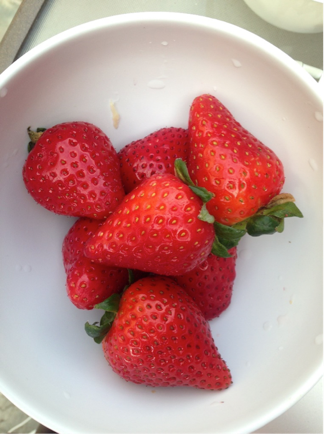 I find all three have a much lower impact on blood sugar than traditional desserts, particularly raspberries and strawberries. The key is more fiber and lower sugar content: one cup of raspberries has just 15 grams of carbs, with 8 grams from fiber and only 5 grams from sugar. That’s much better than pineapple or bananas, which have three times as much sugar and half as much fiber in one cup. This is why I don’t blanket recommend “all fruits” as a dessert option – not all are created equal in terms of sugar and fiber.
I find all three have a much lower impact on blood sugar than traditional desserts, particularly raspberries and strawberries. The key is more fiber and lower sugar content: one cup of raspberries has just 15 grams of carbs, with 8 grams from fiber and only 5 grams from sugar. That’s much better than pineapple or bananas, which have three times as much sugar and half as much fiber in one cup. This is why I don’t blanket recommend “all fruits” as a dessert option – not all are created equal in terms of sugar and fiber.
Frozen fruit is a convenient dessert, since it lasts a long time, is filling, and is sweet enough for my tastes. I always have several bags of raspberries and blueberries in my freezer, both for a quick dessert and my go-to breakfast. If buying frozen, make sure no sugar has been added – the only ingredient should be the berries.
3. Make “dessert (chia) pudding.” I’ve written a lot about chia pudding for breakfast, but I sometimes make it for “dessert” too: adding unsweetened coconut flakes or coconut chips; using cacao nibs and/or dark chocolate chips; adding in more blueberries; and mixing in chocolate or vanilla protein powder. Making it with almond or coconut milk instead of water also bumps the dessert-like creaminess factor.
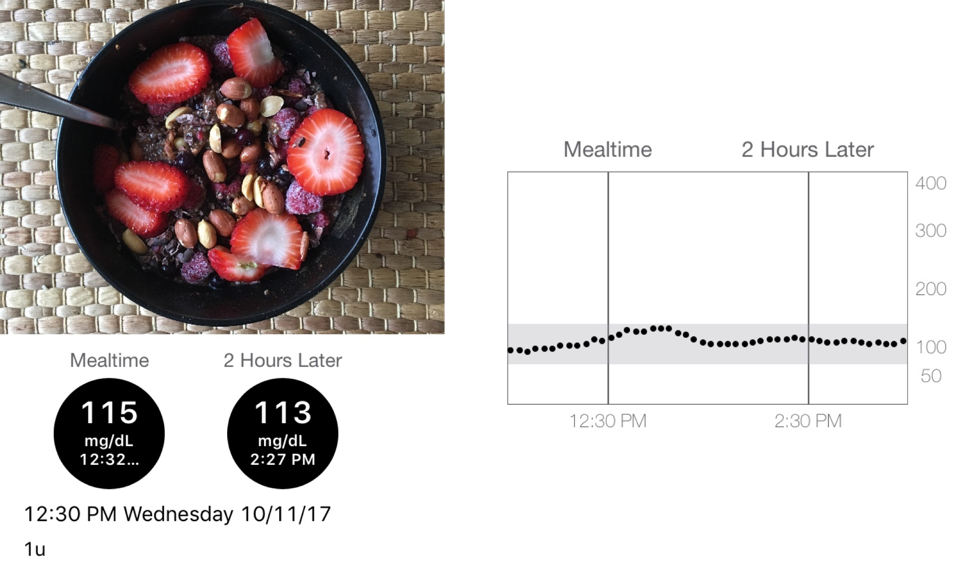
4. Make baked goods using almond flour or coconut flour – they have a lower impact on blood sugar than “traditional” baked goods. After swearing off all baked goods for years, discovering almond flour and coconut flour recipes has been awesome. I especially like these almond flour coconut waffles, skipping the honey and putting raspberries and cacao nibs on top. We use a Dash mini ($9.99) to make them.
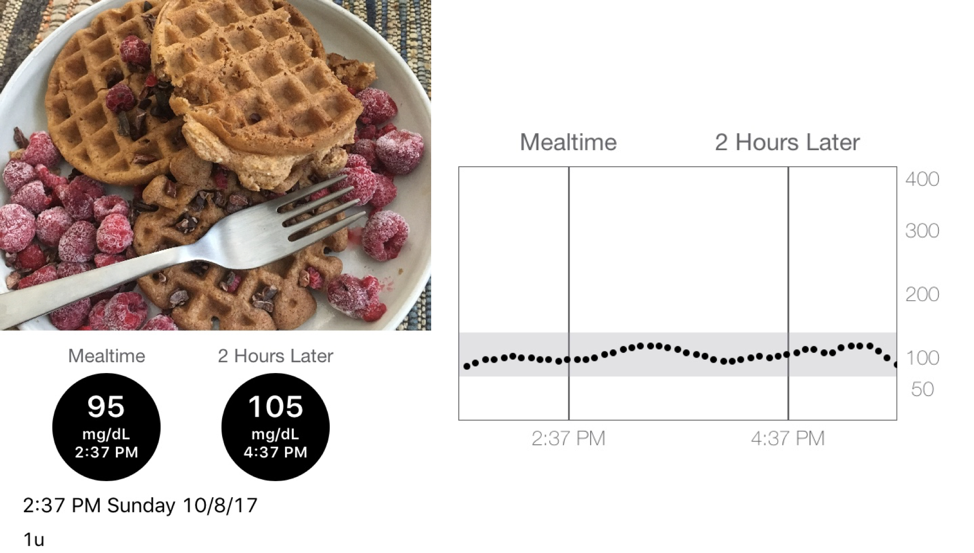
I still don’t cook recipes very often, and when I do, I try to prioritize unique dinners over new desserts. If you’ve got a sweet tooth, however, here are some resources you might find useful:
-
The Keto Diet by Leanne Vogel – This cookbook is creative and I’ve enjoyed all of the recipes I’ve tried so far. Leanne’s website also has 258 low-carb, high-fat dessert recipes listed here.
-
All Day I Dream About Food gets positive reviews from some of my friends with diabetes. Author Carolyn Ketchum also just came out with her own low-carb, high-fat cookbook.
-
The Complete Ketogenic Diet for Beginners by Amy Ramos – This bestseller has been sitting on my table for weeks, though I haven’t found time to make anything yet.
-
Please email me with links to dessert recipes you love!
I try to avoid recipes where a lot of no-carb sweetener is added (e.g., erythritol, xylitol, stevia, Swerve, etc.). I find when a big batch of very sweet-tasting homemade desserts are in the house, I will (i) completely overeat them; and (ii) crave more sweet things.
5. Herbal tea is also a great “dessert” option that doesn't impact blood glucose. I usually go for peppermint or a vanilla rooibos. I’m not an experienced herbal tea drinker, but there is immense variety for those who like both sweet and savory tastes. See some popular herbal teas here (Republic of Tea) and here (Celestial Seasonings). Try a bunch of teas, since they can be hit or miss and your tastes will vary. I recommend loose leaf tea if you’re up for it, since it’s often less expensive than bagged tea and far tastier.
Make Eating Dessert Less Appealing or More Difficult
1. Eat a more filling dinner – go big on vegetables, drinks, and soup. I always load up on vegetables at dinner, usually by replacing normal side dishes with veggies (stir fry, cauliflower rice, zoodles) or having an enormous salad. Visually, this means filling at least half of my plate with vegetables. I’m usually so full that I don’t want dessert at all!
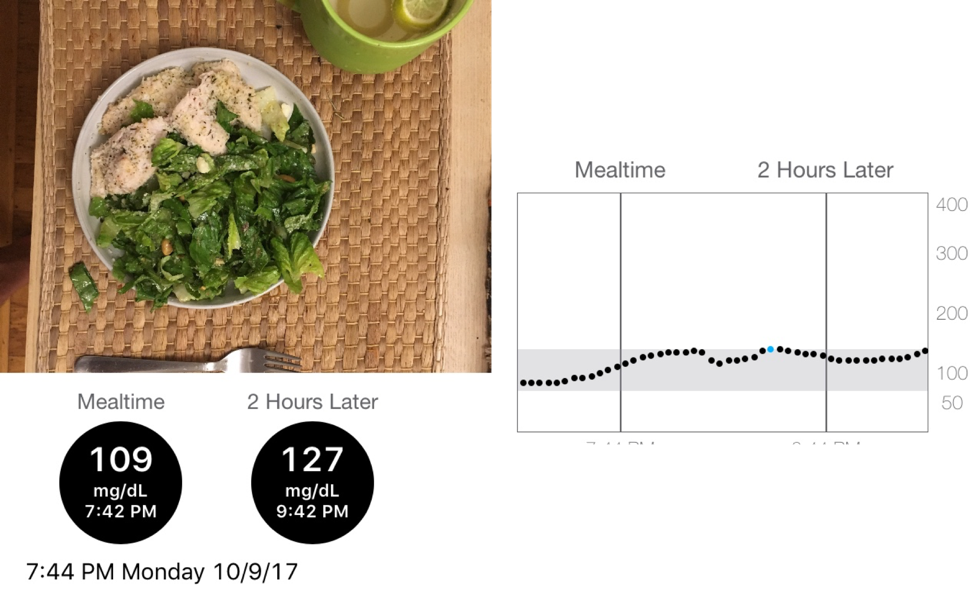
I also drink a lot of liquids at dinner, including sparkling water with a lime/lemon and soup made with Better Than Bouillon paste and (optional) miso paste. We also make this rich coconut soup quite often (skip the brown sugar).
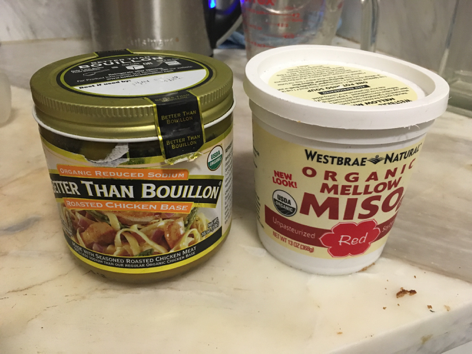
2. Keep traditional desserts out of the house completely or harder to access. This simple strategy really works, since it tackles one of the biggest elements of behavior change: how easy something is to do. If desserts are not in the house and I want to eat them, I have to really go the extra mile to access them. Conversely, when desserts are sitting on the counter and my blood sugar is low, it’s highly likely I’ll have a “nibble,” followed by a hypoglycemia binge.
Putting desserts in hard-to-reach places can also work: on the top shelf of the pantry requiring a chair to access; in a hard-to-open jar or a bag with a tiny pouring slot; in the basement cupboard. That said, this is clearly less effective than pulling them out of the house completely.
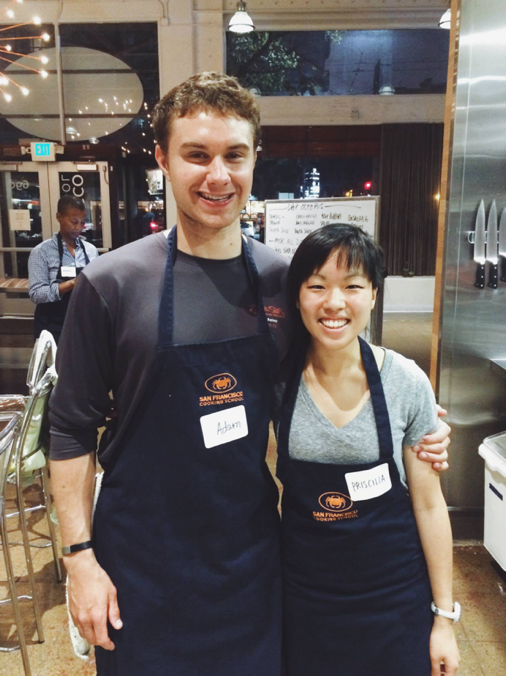 3. Ask a loved one to partner with you in a quest to eat less dessert. It’s so motivational – and so much easier – when someone in the house joins a shared food mission. On the other hand, I’ve heard from so many people who want to eat less dessert or junk food, but find it impossible when it is around the house. Loved ones can unintentionally sabotage food efforts, but they can also be amazing partners – often, it just takes some honesty, a bit of courage, and a non-judgmental ask:
3. Ask a loved one to partner with you in a quest to eat less dessert. It’s so motivational – and so much easier – when someone in the house joins a shared food mission. On the other hand, I’ve heard from so many people who want to eat less dessert or junk food, but find it impossible when it is around the house. Loved ones can unintentionally sabotage food efforts, but they can also be amazing partners – often, it just takes some honesty, a bit of courage, and a non-judgmental ask:
“Honey, will you join me for a 30-day no-dessert-in-the-house challenge? I’m really excited to do this because _____. I think it will be easier and far more fun if we do it as a team. What do you think?”
Dessert Tips From diaTribe Readers!
Send us your dessert ideas here and we’ll anonymously post our favorites in this section!
- I use 1/2 cup non-fat Fage greek yogurt and vary the add-ons - for instance cocoa (unsweetened) and a bit of walnuts. This is my chocolate “mousse.” Sometimes I add 1 tbsp. of Eden apple butter. This really replaces that little dish of ice cream I used to have every evening.
- I like plain yogurt with a few raspberries and walnuts. If my dinner was low carb, I will add some chocolate chips.
- I mix sugar free instant Jell-O pudding in with sugar free Cool Whip. I then pour them into popsicle molds and freeze. They are delicious. You can experiment by adding different flavorings and extracts.
---
“ACTIONABLE...there are specific things you can do outlined in this book that will immediately make your blood sugars better.” – Alexis, living with diabetes and 5-star Amazon review of Bright Spots & Landmines. If you don’t have a copy yet, get it here for free or name your own price. You can also purchase it in paperback ($5.99), or on Kindle ($1.99). All proceeds benefit The diaTribe Foundation, a 501(c)(3) non-profit.
If you’ve already read Bright Spots & Landmines, could you write a one-sentence Amazon review sharing your experience? It would help us so much!







